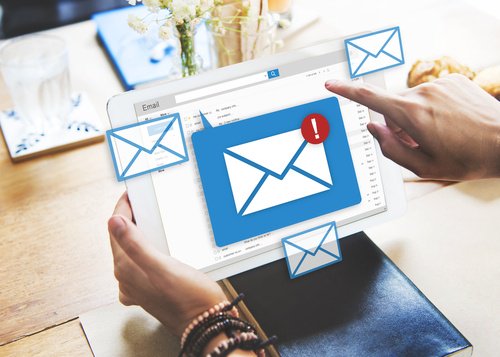An inactive email list can feel like a weight on your marketing strategy. Subscribers who once engaged with your content are now silent, leaving you wondering how to rekindle their interest. However, a dormant list doesn’t have to remain that way. With the right approach, you can successfully re-engage these subscribers and revitalize your email marketing efforts. In this blog, we’ll explore effective strategies for re-engaging an inactive email list and bringing your audience back to life.

Table of Contents
Toggle1. Understand Why Subscribers Become Inactive
Before diving into re-engagement strategies, it’s essential to understand why subscribers may have gone inactive in the first place. Common reasons include:
- Overwhelming Email Volume: Subscribers may feel bombarded by too many emails, leading them to disengage.
- Irrelevant Content: If your emails no longer resonate with their interests or needs, subscribers may lose interest.
- Poor Timing: Emails sent at inconvenient times may be overlooked or forgotten.
- Changes in Preferences: Subscribers’ needs and preferences may evolve, causing them to lose interest in your previous offerings.
Understanding these reasons can help you tailor your re-engagement strategies effectively.
2. Segment Your Inactive Subscribers
Not all inactive subscribers are the same. Segmenting your inactive list allows you to tailor your re-engagement efforts based on their behavior and preferences. Consider creating segments such as:
- Recently Inactive: Subscribers who haven’t engaged in the past few weeks.
- Long-term Inactive: Those who haven’t interacted in several months.
- Engaged Previously: Subscribers who once engaged frequently but have since become inactive.
By segmenting your list, you can craft personalized messages that address each group’s unique needs.
3. Craft a Compelling Re-Engagement Campaign
Once you’ve segmented your inactive subscribers, it’s time to create a targeted re-engagement campaign. Here are some key elements to include:
a. Personalized Subject Lines
Use personalized subject lines that resonate with your audience. Mentioning their name or referencing past interactions can capture attention and increase open rates.
b. Engaging Content
Provide valuable content that addresses the reasons they may have become inactive. This could include helpful resources, exclusive offers, or updates on new products or services.
c. Clear Call-to-Action (CTA)
Incorporate a clear and compelling CTA that encourages subscribers to take action. Whether it’s visiting your website, updating their preferences, or making a purchase, guide them on the next steps.
4. Offer Incentives to Re-Engage
Sometimes, a little incentive can motivate subscribers to return. Consider offering exclusive discounts, freebies, or limited-time promotions to entice inactive subscribers back into your fold.
Examples of Incentives:
- Discount Codes: Provide a special discount for their next purchase.
- Free Trials or Samples: Offer free trials of your services or samples of your products to encourage engagement.
- Exclusive Content: Share premium content or resources that are only available to re-engaged subscribers.
5. Conduct a Preference Survey
A preference survey can help you better understand your subscribers’ interests and preferences. Ask questions about their content preferences, how often they want to hear from you, and what topics they’re interested in. This feedback can help you tailor your future content to better meet their needs.
Sample Survey Questions:
- What type of content do you enjoy most from us?
- How often would you like to receive our emails?
- Is there anything we could do to improve your experience with our brand?
6. Utilize Automated Drip Campaigns
Automated drip campaigns are an effective way to re-engage inactive subscribers gradually. Create a series of emails that gradually nurture them back into engagement. This could include:
- Reintroduction Emails: Remind subscribers of what your brand offers and why they signed up.
- Value-Driven Emails: Share valuable tips, resources, or insights related to their interests.
- Engagement Reminders: Send occasional reminders about exclusive content or offers.
7. Monitor Engagement Metrics
As you implement your re-engagement campaign, closely monitor key engagement metrics to assess its effectiveness. Pay attention to:
- Open Rates: Track how many subscribers are opening your re-engagement emails.
- Click-Through Rates: Measure the number of subscribers clicking on your CTAs.
- Conversion Rates: Evaluate how many subscribers are taking desired actions, such as making a purchase or updating their preferences.
These metrics will help you gauge the success of your re-engagement efforts and identify areas for improvement.
8. Know When to Let Go
Despite your best efforts, some subscribers may remain inactive even after your re-engagement campaign. It’s essential to recognize when to let go. Consider implementing a final re-engagement email with a clear message that if they don’t take action, they will be removed from your list. This approach not only cleans your list but also reinforces the importance of their engagement.
Sample Final Email Message:
“Hi [Name], we’ve missed you! If you’d like to continue receiving our updates and offers, please click here to stay subscribed. Otherwise, we’ll remove you from our list in [timeframe]. We’d love to have you back!”
Conclusion
Re-engaging an inactive email list can be a challenging yet rewarding process. By understanding the reasons for inactivity, segmenting your audience, and implementing targeted strategies, you can successfully bring subscribers back into the fold. Remember to provide value, personalize your messages, and monitor your engagement metrics to refine your approach continually.


No responses yet